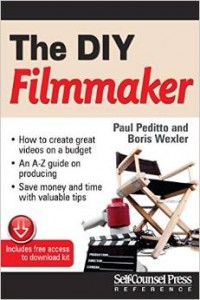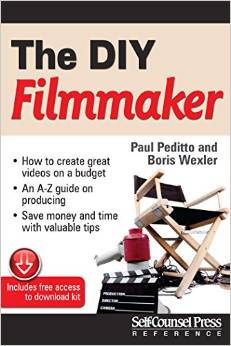Writing the Micro-Budget Film

- PREPARATION
In a perfect L.A. spec world you would write the script you need to write. You’d write it with passion and purpose, resulting in a great script. This would garner a great placing on The Black List and attract an A-List producer who just happens to be combing online websites for the next big thing. Or maybe the script makes semifinals at NicholL Fellowship and bags you a manager who then sends it on to Jeremy Renner’s production company where you sign a 6-figure deal, watch major talent attach to the project and get the movie made for 50 million. You would then be part of the Writer’s Guild, take meetings, pitch, and do assignment work, earning Academy Award consideration and…In a perfect world…
Multiple writers have been signed off Black List, or have placed in X, Y and Z screenwriting contest and gone on to have their scripts made from humble spec origins.
But it’s the ex-casino craps dealer in me that can’t get over the mathematics of this scenario. The probability of this scenario. The likelihood of it. Or—can we be honest—the NON-likelihood of it happening.
I’ve seen quotes on screenplays registered with the Writer’s Guild at upwards of 50,000. And how many major Studio and Indie movie made last year? 500? 600? And how many were specs? Less than 100. For every spec screenplay writer you see on Deadline.com with a magical story of success, we could point to a thousand dreams that didn’t pan out.
Great Peditto, so you’re saying I should stop dreaming? I should stop writing… because the odds are against it?
Not at all. I’m talking about re-calibration. A mental rearrangement of priorities. From Old School to New. I’m talking about knowing yourself…and your project.
When you write a screenplay and you ignore budgetary considerations, you pretty much guarantee needing other people’s money.
Needing other people’s money cedes power. It guarantees the need of L.A. and the necessity of the L.A. mechanism. It’s why you should consider writing with budget in mind. When you write for micro-budget, you increase your odds of seeing the movie happen. Because you control the mechanism.
The real question should be: How do I write a movie for the absolute lowest price possible without compromising the vision of my film?
There is no one size fits all definition for micro-budget. My definition? Micro-budget is a movie made with money exclusively controlled by you. Meaning, literally, money you pull out of your pocket, or your mom’s pocket, or your 1000 Facebook friend’s pockets through a Kickstarter campaign. This could be $500 bucks or $50,000. It’s an amount you raise yourself, no strings attached by content-controlling outside money people.
You’ll need to write a script along the lines I will document using common sense measures to keep costs down. So let’s do this!
- OUTLINING
Logline:
3 things: WHO– GOAL–OBSTACLE. Who is the protagonist? What is their goal? What stands in the way, the obstacle. This is really basic stuff and all you need when considering a logline. That and selling me on the piece! If it’s a comedy hopefully your logline will mimic the tone. Other than a high-concept single line premise– like, for instance: SNAKES ON A PLANE, the logline is the shortest form of outlining your idea.
Step Outline:
I start writing the outline, blocking out the major action, working down into single scenes. It takes me the better part of two months to “card out” the script and have the Step Outline down solid.
The thinking behind scheduling script meetings before a script exists is the immense pain and suffering it saves on the back end. Debate the story with your producers and director before you invest weeks and months writing it. Clarify what you intend to do ahead of time so there are no unfortunate misunderstandings on direction, or tone, or character development, or story arc.
Synopsis vs. Treatment
You can find more on this subject here, but for now let’s see these two in broad strokes, starting with the Treatment:
Treatment =
• 3rd person
• Present tense
• Observable behavior (nothing in the head “he thinks—decides—considers)
• Prose Paragraph format
• Limited Dialogue
Approximately 1 page of treatment per 10 pages of screenplay (this, a loose rule as evidenced by James Cameron’s 97 page Titanic treatment) Think of a treatment as a prose paragraph beat sheet. Broad strokes, multiple pages.
Synopsis:
ONE page (often accompanying the logline)
• A pitch to read/sell the story
• Zero dialogue
• Zero secondary characters or subplots
• Zero backstory
• Hold to A-Story elements of protagonist and antagonist
- BUT HOW DO I START?
Conceive a movie that can be made for a budget you can raise. Outline the idea, never forgetting the common sense rules we’ll over (in the next post.) Write the thing, get some notes from your inner circle, and rewrite it. Make it tight as possible.
This whole time you should be doing something else—developing a network of people who can help make this script happen. That means networking within your local film-making community. Going to events and other people’s films. Meet DP’s, Production Designers, Editors, and other filmmakers who are just starting out. Sure, it helps to be in L.A. to network but it’s not exclusive to L.A. There are a dozen organizations here in Chicago like Chicago Filmmakers and Chicago Hollywood.com that help connect and support you in your efforts. Take classes there, network, and get educated.
Learn, too, about the mechanisms in place to help you raise money. Places like Kickstarter and IndyGoGo help thousands of grass-roots DIY efforts get off the ground. Cultivate investors if possible. And don’t forget to pass the list of those angel financiers on to me!
For Chat we raised $25,000 on Kickstarter (if you want to know how, look here) and the rest was private investors. You have to think of every way possible to raise the cash including Private Investors, Crowdfunding, Grants, Donations, and “Soft Money”. Soft money in Illinois would be the 30% tax credit the state gives to legitimate movie companies shooting in the state at a budget (I believe) of 100K. So for every dollar you spend here on your movie, you get .30 cents back.
You (or the producers you’re working with) will be multi-tasking here, working on the Business Plan. They won’t be able to budget or schedule until the script is locked with what you’ll call a White Production draft. For Chat it took four drafts and one year to get to this point. Of course that won’t mean the script won’t change when you get to Production. You better believe it will. I think there were five more incarnations of Chat while we were shooting it– pink, blue, magenta, tangerfuckingrine…I lost track. But let’s save Production for the next post.
Part 2: Writing the script itself, talk of Production and script changes that will happen.
Stay tuned!


